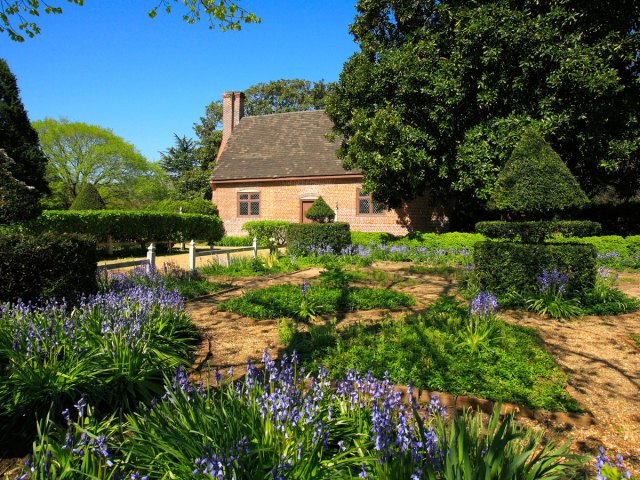A staple of every fairy tale, castles are undeniably romantic, even if they weren’t built with such notions in mind. In reality, many castles were constructed to defend, with features like moats, ramparts, and drawbridges all strategically designed to keep invaders out. They also usually housed people of importance, ranging from royalty to military and even religious figures. Typically built around the Middle Ages, castles often started on the smaller side and then grew in size over the centuries. Today, many of these magnificent structures remain standing — here’s where you’ll find nine of the largest castles in the world.
Edinburgh Castle – Edinburgh, Scotland
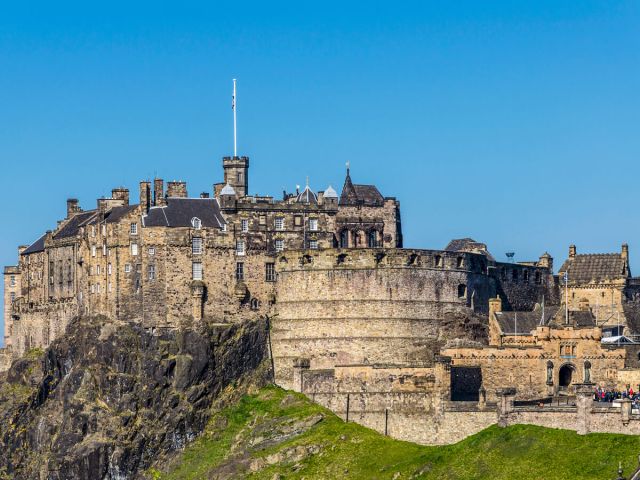
Edinburgh Castle was built in 1103 atop the aptly named Castle Rock, a volcanic crag which formed some 350 million years ago and now overlooks the Scottish capital. The 384,660-square-foot structure has served many purposes over the years, from royal residence for monarchs to prison and impenetrable military fortress. Well, not exactly impenetrable — the Brits did overtake the castle twice, but both times, the Scots won it back. If you visit today, don’t miss the Great Hall with its famously intricate wood roof, completed for King James IV in 1511, or the dog cemetery, where the beloved pooches of Scotland’s military finest are laid to rest.
Himeji Castle – Himeji, Japan

The largest castle in Japan, Himeji Castle spans 446,357 square feet and rises 152 feet into the skies above this central Japanese city. The castle — nicknamed the “White Heron Castle” for its size and color — was originally built in 1346. Himeji was continuously enlarged over the centuries by the ruling clans who occupied it. At one point, the grounds featured three moats for maximum protection. In true Japanese fashion, the castle lawn is filled with cherry trees. Now that it’s open to the public, it’s a popular place to view the cherry blossoms during spring.
Buda Castle – Budapest, Hungary
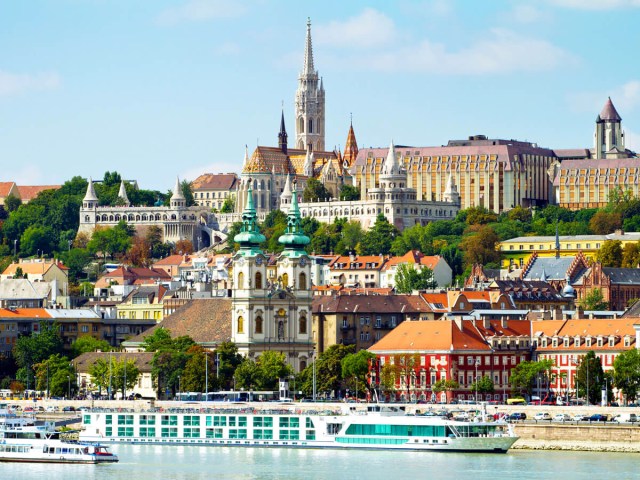
Overlooking the Danube River on Castle Hill, the imposing Buda Castle dates back to the 13th century, after the first Mongol invasion of Eastern Europe. Encompassing 480,866 square feet, the castle was built to fortify the city against another impending attack, which, over the course of centuries, would happen 31 more times. As the former home of the Hungarian royal family, the palace now contains several museums and offers access to the Labyrinth, a network of caves beneath the castle that have been used since medieval times.
Spis Castle – Žehra, Slovakia

Situated in the northeast part of Slovakia, Spis Castle was one of the few castles from which defensive forces were able to successfully fend off the Mongol attacks of the 13th century. Built and continuously improved upon from the 12th until the 15th century, the castle changed from Romanesque to Gothic style, growing to its current size of 532,652 square feet. These major renovations added all the classic castle elements, including a knights’ hall, chapel, and on-site palace. Due to a fire in 1780, the castle is not fully intact but is still well worth the visit.
Hohensalzburg Castle – Salzburg, Austria

Hohensalzburg Castle dates back to 1077, when the archbishop requested this fortress to be built to defend the city of Salzburg and protect the prince bishops. Centuries later, in 1462, the addition of curtain walls and several towers made Hohensalzburg all the more castle-like. In the 1500s, the 586,880-square-foot fortress acquired its peculiar coat of arms depicting a lion holding a turnip. Although there are several myths as to the meaning of the turnip, it likely was meant to represent the agricultural heritage of the archbishop of the time.
Windsor Castle – Windsor, England
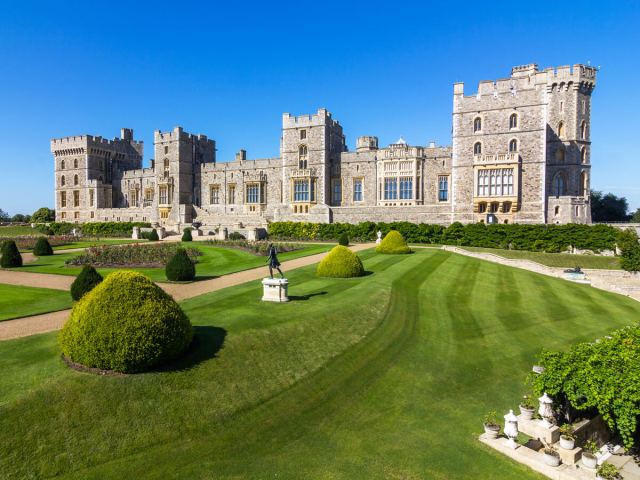
In 1070, William the Conqueror began to build Windsor Castle above the River Thames — an endeavor that took 16 years to complete. Over the centuries, his successors added to his creation, turning what began as a wooden fortress into the massive stone castle that stands today. The 590,239-square-foot castle was finished in 1528, restored during the 1920s, and remains one of the official homes of the monarch today — making it the world’s largest inhabited castle. Along with Westminster Abbey, Windsor Castle contains the bodies of some of the most important figures in British history, including Henry VIII, Jane Seymour, and George V.
Wawel Castle – Krakow, Poland
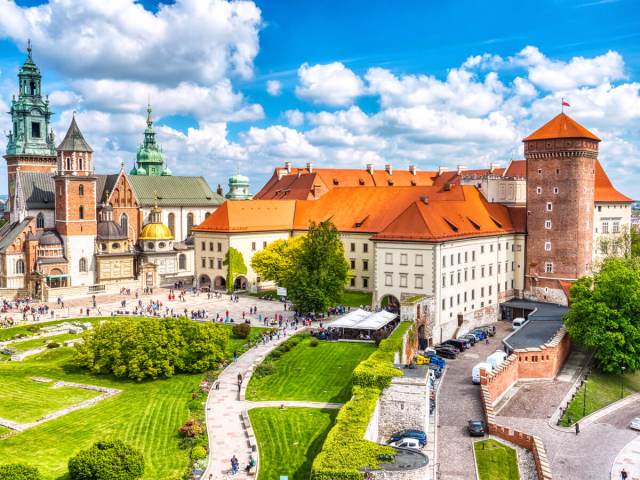
Wawel Castle’s strategic location on a river embankment proved ideal for defensive purposes, with views that could scope out potential invaders. As legend has it, a cave beneath the castle housed a terrifying dragon, who was supposedly slain by King Krakus, Krakow’s mythological founder. After being built, the 602,047-square-foot castle served as the official home of the Polish monarch until 1609, and the site of royal coronations and burials until 1734.
Prague Castle – Prague, Czechia
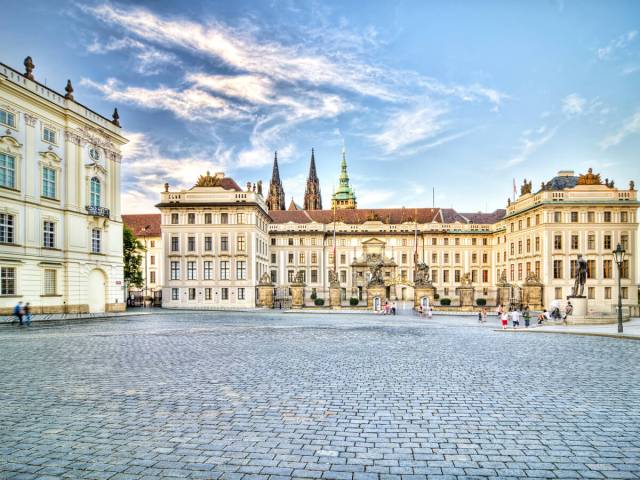
What would eventually turn into a sprawling castle began as a ninth-century fortress built by the first Christian prince of Bohemia. At the time, Prague Castle’s lofty vantage point over the Vltava River was chosen to help keep an eye out for raiders. As the castle sprang up over the centuries, so did churches, towers, gardens, and palaces — turning the site into the 750,000-square-foot fortress visitors see today. Built in the late 14th century, Vladislav Hall was the largest hall in medieval Prague, famous for its intricately vaulted ceiling and beautiful Italian Renaissance windows.
Malbork Castle – Malbork, Poland
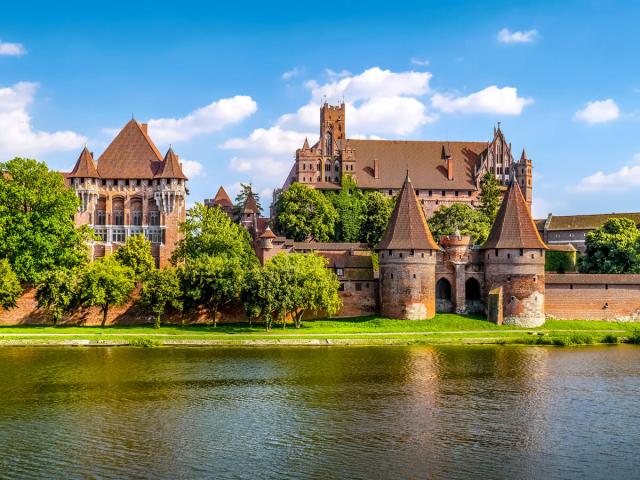
Spread over 1.5 million square feet, Malbork Castle is the largest castle in the world. Built on 52 acres next to the Nogat River, the castle consists of three separate sections: High Castle, Middle Castle, and Low Castle. It also features several castle defense systems, including three walls, moats, and a main drawbridge that leads to the courtyard. Malbork Castle was built by the Teutonic Knights, a powerful 13th-century band of German military monks who protected Christians in the Middle Ages. The castle served as their headquarters for 150 years, until the Polish army took over in 1457. Today, the sprawling palace is open to visitors.
More from our network
Daily Passport is part of Optimism, which publishes content that uplifts, informs, and inspires.













